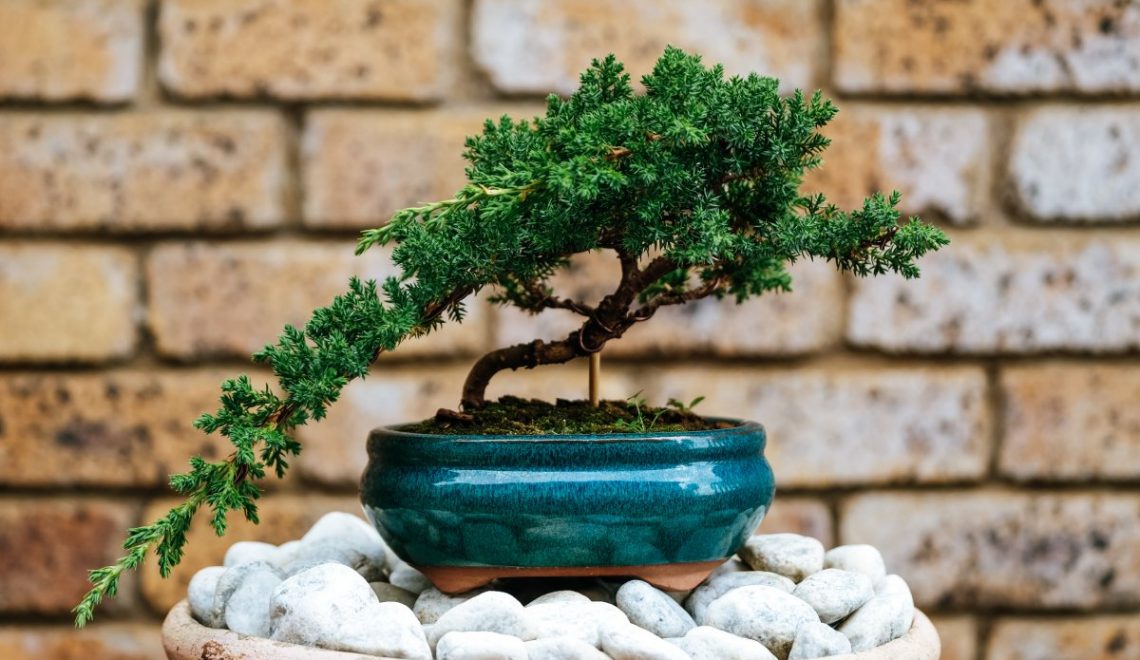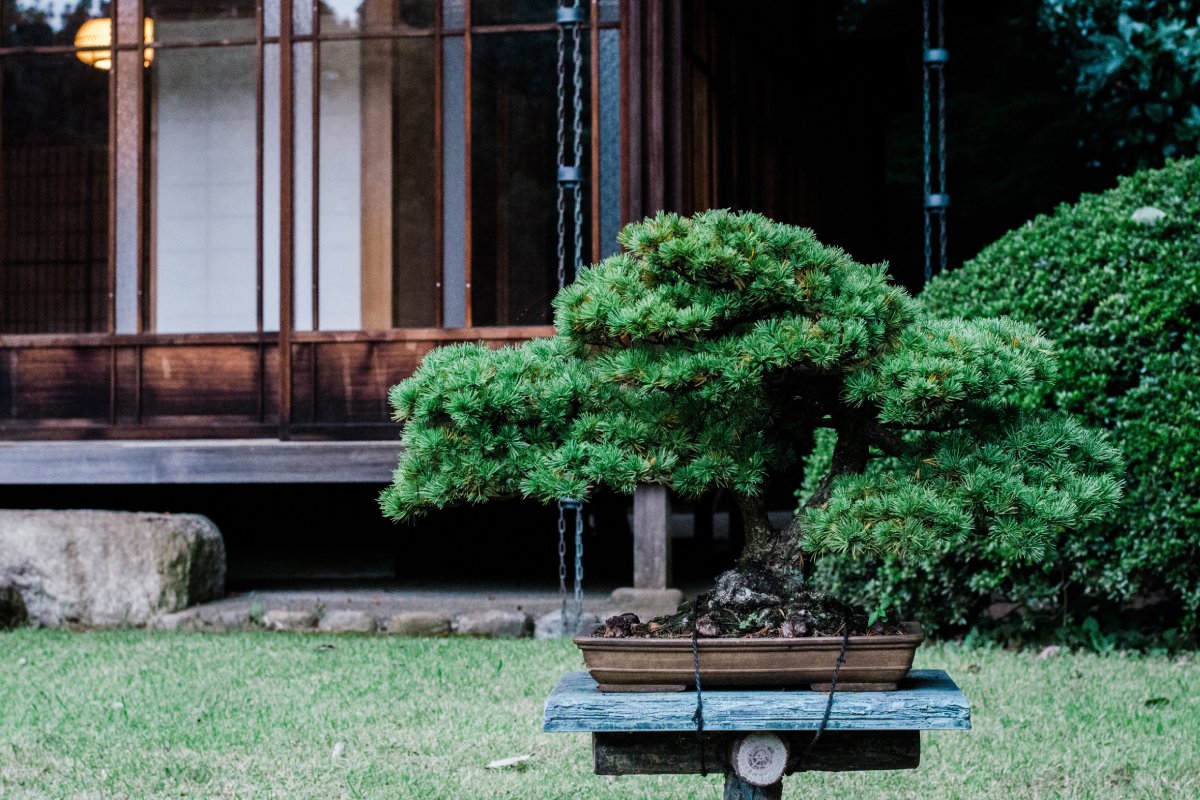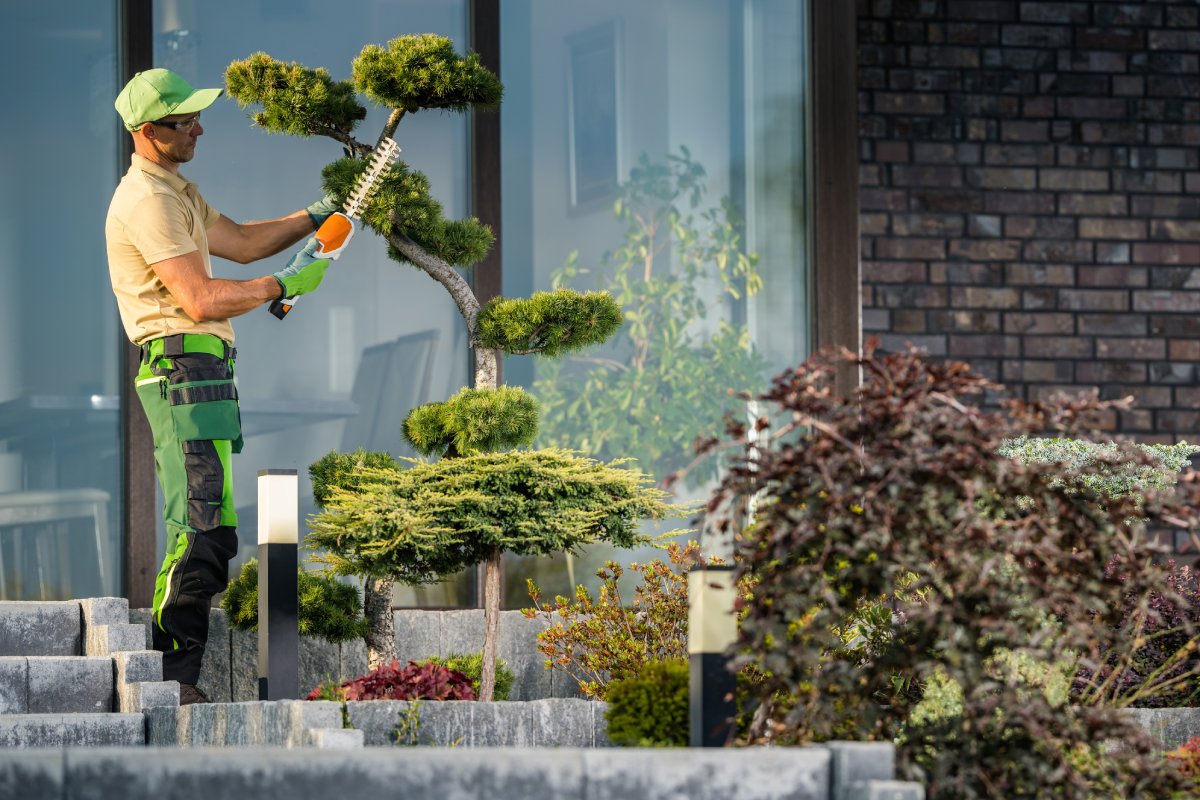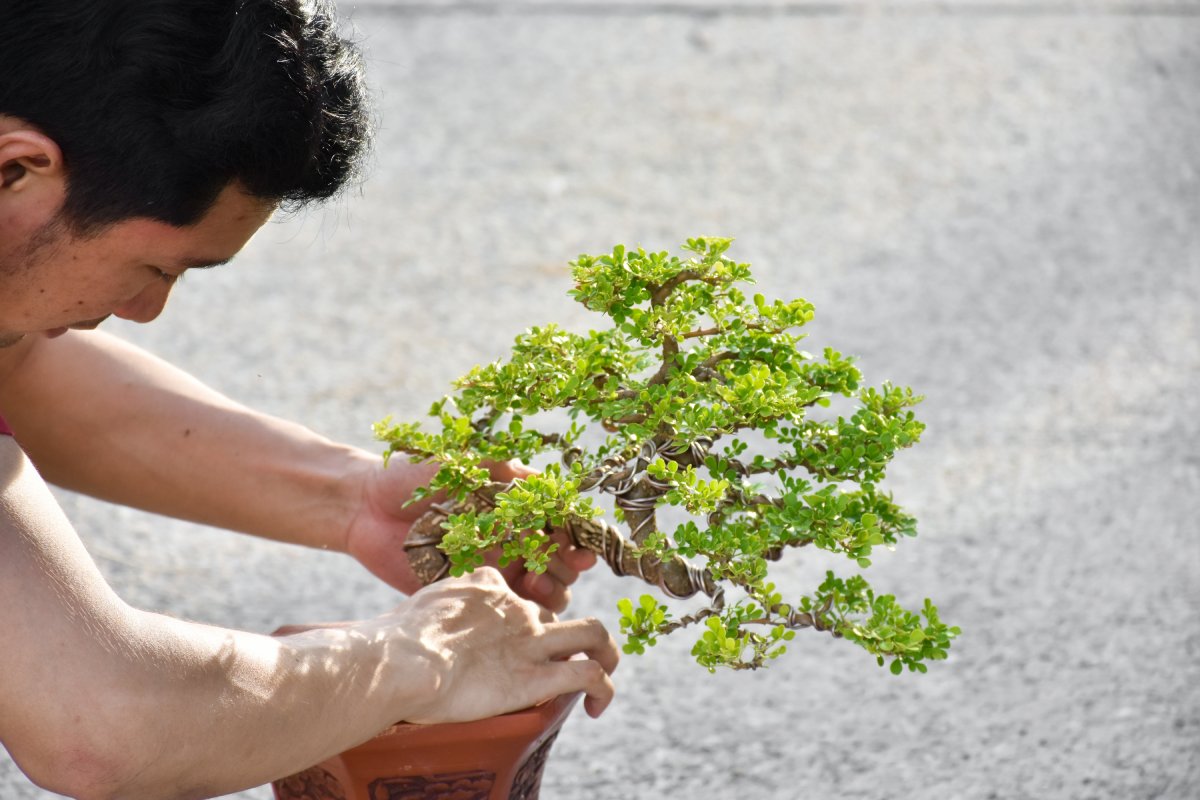
Bonsai trees are a unique and special type of indoor plant that have captured the imagination of people around the world for centuries. With its intricate shape, delicate foliage, and miniature size, a bonsai tree offers a calming and soothing presence that can evoke a sense of peace and tranquillity.
This can be attributed to several factors such as its visual distraction, connection with nature, relaxing pastime of caring for it, and the sense of accomplishment as the tree grows and evolves.
In this article, we are going to let you get to know a bit more about bonsai, how to grow it? Is it a good indoor plant? And what is so special about it? Let’s go!

How to grow bonsai?
Bonsai is a Japanese art form that involves growing small trees in containers to create miniature versions of larger trees found in nature. Growing bonsai requires patience and dedication, but the end result can be a beautiful and unique piece of living art. Here are some steps to help you grow your own bonsai tree:
- Choose the right species: Not all trees are suitable for bonsai, as some species grow too large or have leaves that are too big for the small container. Choose species that are naturally small, such as junipers, ficus, and azaleas.
- Get the right container: Bonsai containers come in various shapes, sizes, and materials. Consider the size of your tree, the style you want to achieve, and your own preferences when selecting a container.
- Plant the tree: Fill the container with bonsai soil, which is a mixture of regular potting soil, sand, and other materials to improve drainage. Gently remove the tree from its original pot, shake off excess soil, and plant it in the new container.
- Provide proper care: Bonsai trees require proper watering, sunlight, and fertilisation to thrive. Water your tree regularly, but make sure to avoid overwatering, which can lead to root rot. Place your tree in a location where it will receive enough sunlight, but not too much direct sunlight, which can be harmful. Use a fertiliser specifically formulated for bonsai to provide the nutrients your tree needs.
- Prune and shape the tree: Pruning is an important aspect of bonsai and helps to maintain the small size and shape of the tree. Prune back the branches and leaves to maintain the desired shape and size, and remove any dead or yellowing leaves to keep the tree healthy.
- Wiring: Bonsai trees can be trained to grow in certain directions and shapes by using wire. Carefully wrap wire around the branches and trunk, gently bending the tree into the desired shape. Check the wire regularly and remove it once the tree has been trained into the desired shape.
- Repotting: Bonsai trees will eventually outgrow their containers, so it is important to repot them every 2-3 years to maintain their health and growth. When repotting, carefully remove the tree from the container, prune the roots, and reposition it in a larger container filled with fresh bonsai soil.
Though growing bonsai requires a lot of dedication, if you follow the steps above, a beautiful and unique bonsai will be a source of your pride and enjoyment for years to come.

Is bonsai a good indoor plant?
Bonsai is a great indoor plant for those looking for a unique and artistic touch to their home or office decor. It is a traditional Japanese art form that involves growing miniature versions of larger trees in containers. Bonsai trees are small, compact, and versatile, making them ideal for indoor spaces where space is limited. They also add a touch of elegance and tranquillity to any environment.
One of the key benefits of bonsai as an indoor plant is its adaptability to different conditions. Bonsai trees can thrive in low to moderate light conditions, making them ideal for indoor environments where natural light may be limited. Additionally, bonsai trees are easy to care for, with simple watering and pruning requirements. Unlike other indoor plants that may require special care or attention, bonsai is a low-maintenance plant that is suitable for people of all skill levels.
Bonsai trees also offer numerous health benefits. Indoor plants have been shown to improve air quality, reduce stress and anxiety, and increase overall well-being. Bonsai trees, in particular, are known for their calming effect, making them an ideal addition to any home or office space.
Another advantage of bonsai as an indoor plant is its versatility in terms of style and design. There are numerous species of trees that can be used for bonsai, each with its own unique shape, texture, and leaf structure. Whether you prefer a traditional, natural look or a more stylised, artistic design, bonsai has something to offer for everyone.
What is so special about a bonsai tree?
A bonsai tree is a unique and special plant that has captured the imagination of people around the world for centuries. Bonsai is a traditional Japanese art form that involves growing small trees in containers to create miniature versions of larger trees found in nature. The beauty and elegance of a bonsai tree lie in its miniature size, intricate shape, and the delicate balance between the tree, its container, and the surrounding environment.

As aforementioned, one reason why bonsai trees are special is their versatility. There are numerous species of trees that can be used for bonsai, each with its own unique characteristics and properties. Alongside with numerous health benefits, it could improve air quality and reduce stress and anxiety. But these qualifications are like other indoor plants, are there any more values that make bonsai special, stand out, and be needed by a lot of people? Let’s see.
One of the things that make bonsai trees so special is their ability to evoke a sense of peace and tranquillity. The calming effect of a bonsai tree has been well documented, making it an ideal addition to any home or office environment. The intricate shape, texture, and foliage of a bonsai tree provide a visual distraction that increases your focus and concentration. These effects could happen through the process of watering, pruning, and training the tree can help to soothe the mind and provide a sense of peace.
Another aspect is that bonsai provides a sense of accomplishment. This plant, like mentioned before, though it’s quite easy to maintain, they grow and evolve over time really slowly, by the time it becomes the shape you were expecting, you would forget how long that was and I’m sure you will be proud of it.
In conclusion
In conclusion, bonsai trees are a unique and special type of indoor plant that offer a wide range of benefits, both physical and mental. From its calming effect and ability to evoke a sense of peace and tranquillity, to its adaptability to different conditions and versatility in terms of style and design, bonsai trees have something to offer for everyone.
Whether you are looking to improve your indoor environment, reduce stress and anxiety, or simply enjoy a relaxing and meditative hobby, a bonsai tree is an excellent choice. With proper care, a bonsai tree can be a lifelong companion, providing joy, pride, and a touch of nature for years to come.

